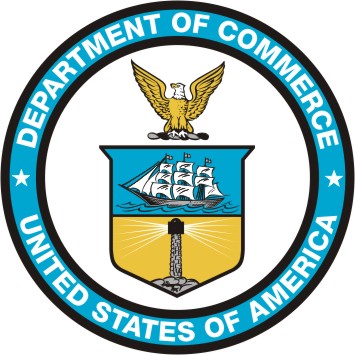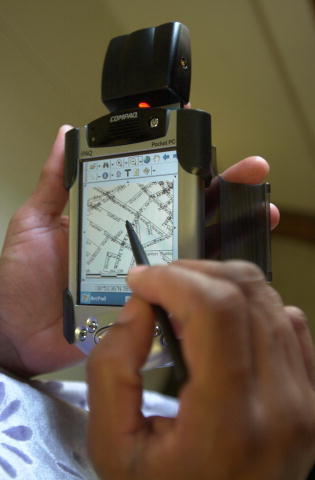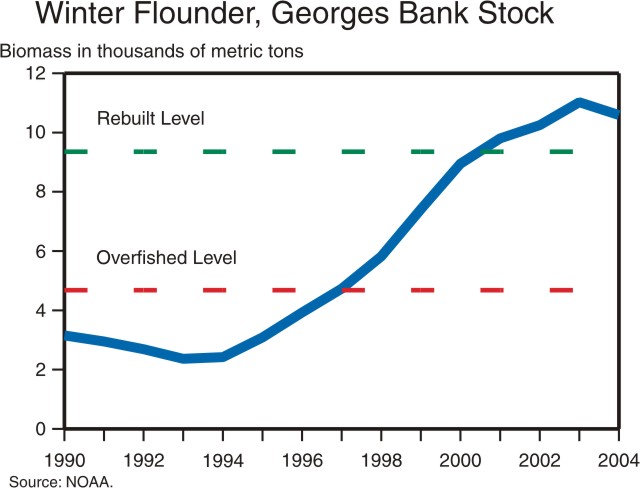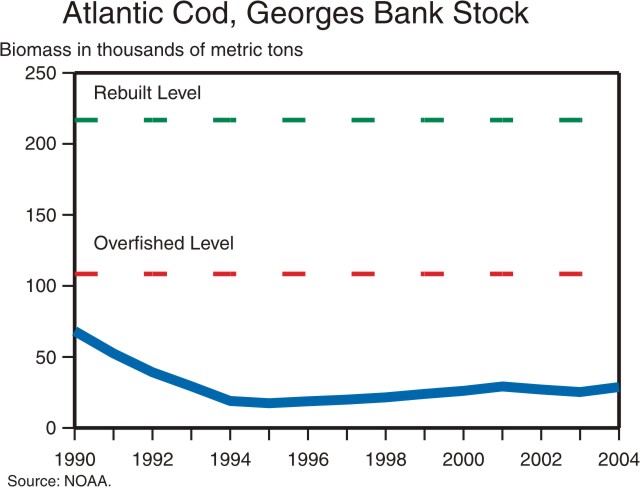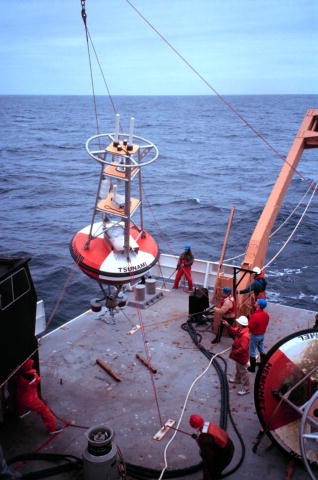 Skip Main Navigation
Skip Main Navigation
| |||||||||||||||||||||||||||||||||||||||||||||||||||||||||||||||||||||||||||||||||||||||||||||||||||||||||||||||||||||||||||||||||||||||||||||||||||||||||||||||||||||||||||||||||||||||||||||||||||||||||||||||||||||||||||||||||||||||||||||||
| White House Website | |||||||||||||||||||||||||||||||||||||||||||||||||||||||||||||||||||||||||||||||||||||||||||||||||||||||||||||||||||||||||||||||||||||||||||||||||||||||||||||||||||||||||||||||||||||||||||||||||||||||||||||||||||||||||||||||||||||||||||||||
DEPARTMENT OF COMMERCEMEETING PRESIDENTIAL GOALSPromoting Economic Opportunity and Ownership
Protecting America
Making Government More Effective
PROMOTING ECONOMIC OPPORTUNITY AND OWNERSHIPEnhancing Economic Development and TradeThe President’s 2006 Budget creates a new economic development program within the Department of Commerce, the Strengthening America's Communities Grant Program. The President’s proposal replaces the current duplicative set of Federal community and economic development programs with a more consolidated approach that focuses resources on the creation of jobs and opportunities, encourages private sector investment, and includes rigorous accountability measures and incentives. The Strengthening America's Communities Grant Program is a targeted, results-oriented approach that will encourage innovation and economic opportunity. By streamlining the delivery of Federal economic development programs, taxpayers will see administrative savings. The President’s Budget includes $3.7 billion for this program to provide economically distressed communities with a source of funding for planning, infrastructure development, and business financing to achieve long-term economic stability and growth (see table below). Promoting Results-Oriented Economic Development
The 2006 Budget proposes a new approach, the Strengthening America's Communities Grant Program, for targeting assistance to needy communities and focusing on achieving tangible results for low-income persons and economically distressed areas:
Our changing economy presents challenges for certain communities where traditional industries, such as manufacturing, do not employ as many workers as they did a generation ago. The President has proposed a new Opportunity Zone Initiative that will help these local economies adapt and diversify by targeting Federal resources and encouraging new and existing businesses to invest in these areas. The Commerce Department will have the lead role in managing this initiative. These efforts, combined with the President’s tax relief packages and initiatives to increase homeownership and reduce regulatory burdens, will help more communities participate in our growing national prosperity. The Minority Business Development Agency (MBDA) also strives to improve economic opportunity. In 2004, MBDA programs provided assistance and improved access to financial and procurement opportunities to over 25,000 clients nationwide. In the spring of 2004, the President, by Executive Order, renewed the Advisory Commission on Asian Americans and Pacific Islanders. The 2006 Budget supports increases for the Commission’s efforts to improve economic opportunities. Enhancing the growth of export businesses and reducing barriers to trade help strengthen the economy. The Budget provides a program level of $409 million for the International Trade Administration (ITA) for trade promotion and compliance activities. This level of funding will expand the U.S. exporter base by increasing the number of U.S. exporters entering new markets and the number of U.S. firms exporting for the first time, and by supporting efforts to ensure compliance with trade agreements. China is our third largest trading partner. Currently, there are almost 13,000 U.S. small- and medium-sized enterprises that export to China. Nevertheless, trade with China continues to present a number of challenges for U.S. companies. ITA, together with other Federal agencies, has worked to help U.S. companies overcome these barriers. Recently, ITA has increased staff working on market access problems in China, created a China Business Information Center to better advise small and medium-sized companies on doing business with China, increased its staff at our Embassy and Consulates in China, and created a China office in the Import Administration to better focus resources on China anti-dumping cases. To help ensure that China honors its World Trade Organization commitments, the United States continues to engage China on specific trade issues in a number of forums, including the Joint Commission on Commerce and Trade (JCCT). The first meeting of the ministerial-level JCCT, held in mid-2004, achieved progress on several important issues, including technical standards and distribution services, and strengthened commitments to improve intellectual property right protections. Building the Infrastructure for InnovationThe 2006 Budget includes increases for Commerce programs that support and enhance innovation and technological advancement—creating the conditions for economic growth. The Patent and Trademark Office (PTO) issues patents, registers trademarks and works to protect U.S. intellectual property rights holders through international treaties and enforcement training programs. The 2006 Budget requests a program level of $1.7 billion for PTO, a 10-percent increase from 2005. This program level provides PTO full access to its fee collections in 2006. PTO developed an aggressive strategic plan and proposed legislative changes to restructure patent and trademark fees to modernize and improve its operation. This included initiatives to improve the quality and the processing times of patents and trademarks, and initiatives to improve electronic filing and processing of applications. The Congress enacted many aspects of the modernization bill in the 2005 Consolidated Appropriations Act. The increase in the 2006 Budget should enable PTO to continue to make progress in achieving its performance goals, increasing the percentage of patents and trademarks processed electronically to 100 percent by 2006, and achieving complete review of patent applications in an average of 31 months and trademark applications in an average of 15 months by 2010. Protecting Intellectual Property Rights Abroad
Together with ITA and other Federal agencies, PTO is participating in the Administration’s Strategy Targeting Organized Piracy (STOP!) Initiative, launched in October 2004. This initiative targets the global trade of pirated and counterfeit goods that threatens America’s innovation economy. PTO has developed a comprehensive guide, and telephone hotline available at www.stopfakes.gov to help American innovators and businesses safeguard their ideas and inventions. In addition, PTO is enhancing its Office of Enforcement to better assist foreign countries in the enforcement of intellectual property rights. The National Institute of Standards and Technology (NIST) develops technical standards necessary to support existing industries and to enable development of emerging technologies. The Budget provides $485 million, a 7.5-percent increase over 2005, for measurement and standards research related to nanotechnology, biosciences, manufacturing, computing and networking systems, and public safety, and for the renovation and repair of NIST labs. With these resources, NIST will be able to address a broad array of national scientific and technical infrastructure needs by building intramural capacity and leveraging complementary external research efforts through collaboration and partnerships. Telecommunications and information-related industries are an increasingly important and growing part of the economy. The National Telecommunications and Information Administration (NTIA) works to bring the benefits of advanced telecommunications technologies to millions of Americans and promotes the efficient use of the Federal radio spectrum. In response to a Presidential directive, NTIA has taken a lead role in the Government-wide effort to implement the Spectrum Policy for the 21st Century. The 2006 Budget supports this initiative to improve domestic and international spectrum management.
Providing Key Information about the Population
| |||||||||||||||||||||||||||||||||||||||||||||||||||||||||||||||||||||||||||||||||||||||||||||||||||||||||||||||||||||||||||||||||||||||||||||||||||||||||||||||||||||||||||||||||||||||||||||||||||||||||||||||||||||||||||||||||||||||||||||||
|
|
Populations of New England groundfish species, including
Georges Bank Winter Flounder and Atlantic Cod, reached record lows in the
1990s due to overfishing. Management measures aimed at rebuilding these stocks
were introduced by NOAA and the New England Fishery Management Council in
1994. Some stocks, such as Winter Flounder, have responded quickly. However,
for other species, such as Atlantic Cod, management challenges remain.
Management of marine resources will also be enhanced through funding to implement local action plans to protect coral reefs based on strategies developed with State and local governments and stakeholders.
|
Restoration of threatened and endangered salmon stocks is important for environmental quality, Native American communities, commercial and recreational fishermen, and the economic vitality of the Pacific Northwest. The aim of the Pacific Coastal Salmon Recovery Fund is to help restore these stocks through improvement and expansion of habitat. However, a 2004 Program Assessment Rating Tool analysis found that the program was not able to allocate funding according to the recovery needs of sensitive salmon populations. The Administration continues support for the Recovery Fund and proposes improvements to help ensure funds are allocated to high priority activities.
The Commission on Ocean Policy also commended the work of NOAA’s Sea Grant program, highlighting its capability to gather local and State input on research priorities. The Budget continues support for Sea Grant, which will focus this valuable capability on important regional ocean and coastal ecosystem concerns.
Accurately predicting storm and other weather events and tracking changes in the climate over time are important to public safety and for averting economic losses. The 2006 Budget provides planned increases for continued development and acquisition of weather satellites. In addition, the Budget supports increases within the climate program, specifically focusing on the strategic programs of the President’s Climate Change Research Initiative.
The Budget also supports progress towards the goals of the U.S. Integrated Earth Observation System, which will provide improved coordination, capability and data management for weather prediction, natural disaster management, climate research, and ocean resources management. The devastating impact of the recent tsunami in South Asia demonstrates the potential value of this effort.
Improving Effectiveness by Realigning Other Commerce Programs
Consistent with the Administration’s emphasis on shifting resources to reflect changing needs, the 2006 Budget proposes to terminate the Advanced Technology Program. This proposal is consistent with the 2005 Consolidated Appropriations Act which did not provide funding for new awards. The Administration believes that other NIST programs are more effective and important in supporting the fundamental scientific understanding and technological needs of U.S.-based businesses, American workers, and the domestic economy.
The 2006 Budget proposes to fund the Hollings Manufacturing Extension Partnership Program at $47 million, a 50-percent reduction from the 2005 grant level. The Administration’s approach will maintain a strong national network of centers while focusing funding based on centers’ performance in providing information and consulting services to small manufacturers. The program has also augmented funding through expanding partnerships with other agencies and institutions. Given this new operating environment, the Administration believes the program has evolved to a stage at which less reliance on direct appropriations is required.
To reduce duplication within Government services, the Budget also proposes to terminate the Public Telecommunications Facilities, Planning and Construction program. This program has recently targeted funding toward the purchase of digital transmission equipment by public broadcasting stations; the 2006 Budget proposes that a portion of the Corporation for Public Broadcasting’s already enacted 2006 funding be made available for this purpose.
To improve efficiency, the Budget also streamlines administrative layers within the Economics and Statistics Administration and the Technology Administration.
Update on the President’s Management Agenda
The table below provides an update on the Department of Commerce’s implementation of the President’s Management Agenda as of December 31, 2004.
| Human Capital | Competitive Sourcing | Financial Performance | E-Government | Budget and Performance Integration | |
|---|---|---|---|---|---|
| Status | |
|
|
|
|
| Progress | |
|
|
|
|
|
Arrows indicate change in status since evaluation on September 30, 2004. During 2004, Commerce made significant progress in reducing workforce skill gaps in mission critical areas and reducing average hiring times. Commerce also resolved remaining areas of financial management non-compliance and developed a plan for expanding the use of its financial reporting systems to improve operations in additional key business areas; actively contributed to several E-Government initiatives, including Export.gov to improve potential exporters’ access to trade information; and completed Program Assessment Rating Tool evaluations on over two-thirds of its programs. |
|||||
| 2004 Actual |
Estimate | ||
|---|---|---|---|
| 2005 | 2006 | ||
| Spending | |||
| Discretionary Budget Authority: | |||
| Departmental Management: | |||
| Salaries and Expenses | 49 | 47 | 54 |
| Emergency Guaranteed Loan Program accounts | 52 | — | −50 |
| Headquarters Renovation | — | — | 30 |
| Office of the Inspector General | 21 | 21 | 23 |
| Subtotal, Departmental Management | 122 | 68 | 57 |
| Economic Development Administration | 308 | 284 | 27 |
| Economic Development Challenge | — | — | 3,710 |
| Bureau of the Census | 609 | 745 | 877 |
| Economic and Statistics Administration | 73 | 79 | 85 |
| International Trade Administration | 336 | 398 | 396 |
| Bureau of Industry and Security | 67 | 67 | 77 |
| Minority Business Development Agency | 29 | 30 | 31 |
| National Oceanic and Atmospheric Administration (NOAA): | |||
| Operations, Research and Facilities | 2,697 | 2,852 | 2,608 |
| Procurement, Acquisition and Construction | 961 | 1,038 | 965 |
| Other accounts | 11 | 18 | 11 |
| Subtotal, NOAA | 3,669 | 3,908 | 3,584 |
| Patent and Trademark Office (PTO): | |||
| Program Level | 1,221 | 1,555 | 1,703 |
| Offsetting Collections | −1,321 | −1,563 | −1,703 |
| Subtotal, PTO | −100 | −8 | — |
| Technology Administration | 6 | 6 | 4 |
| National Institute of Standards and Technology (NIST): | |||
| Scientific and Technical Research and Services | 336 | 379 | 426 |
| Industrial Technology Services | 208 | 244 | 47 |
| Construction of Research Facilities | 64 | 73 | 59 |
| Subtotal, NIST | 608 | 696 | 532 |
| National Telecommunications and Information Administration | 48 | 38 | 23 |
| Total, Discretionary budget authority | 5,775 | 6,311 | 9,403 |
| Memorandum: Budget authority from enacted supplementals | — | 21 | — |
| Total, Discretionary outlays | 5,704 | 6,122 | 6,383 |
| Total, Mandatory outlays | 151 | 161 | 124 |
| Total, Outlays | 5,855 | 6,283 | 6,507 |
| Credit activity | |||
| Direct Loan Disbursements: | |||
| Fisheries Finance Direct Loan Financing account | 98 | 14 | 12 |
| Total, Direct loan disbursements | 98 | 14 | 12 |
| Federal Register | Jobs at OMB | FOIA | OMB Locator | Text only | Accessibility | Privacy Policy | Site Search | Help |
